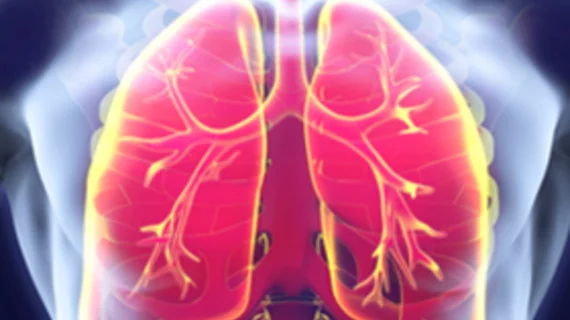Radiomic features classify lung cancer from benign nodules
Radiomic features extracted from CT images accurately distinguished small-cell lung cancer from benign nodules, according to a retrospective study published Dec. 18 in Radiology.
As part of the study, researchers included screening or diagnostic non-contrast CT images from 290 patients from between 2007 and 2013. Those patients were randomized into a training set of 145 patients with 73 adenocarcinomas and 72 granulomas; and a test set with 72 adenocarcinomas and 73 granulomas.
A board-certified radiologist manually segmented the corresponding nodule of interest from axial CT images, and intra- and perinodular features were extracted.
Using intranodular radiomic features, the machine classifier achieved an area under the receiver operating characteristic curve (AUC) of 0.75 in the test set. When perinodular features were added, the AUC jumped to 0.80. The most predictive features were found within five millimeters of the nodule.
Adenocarcinomas are the most common subtype of non-small cell lung cancer, according to Niha Beig, of Case Western Reserve University in Cleveland, Ohio, and colleagues. And non-calcified granulomas are the most common and “possibly most confounding” false-positive findings.
“Differentiating these two pathologic conditions is one of the most challenging issues faced by thoracic radiologists due to their similar appearance on CT images,” the authors wrote.
Additionally, A trained convolutional neural network achieved an AUC of 0.76 in the same test set, but may have been affected by the training sample size, the authors noted. Two trained radiologists achieved AUCs of 0.61 and 0.60.
Beig and colleagues wrote their radiomics technique could reduce the number of interventions and unnecessary imaging by limiting the number of benign granulomas wrongly identified as “intermediate” or “suspicious.”

